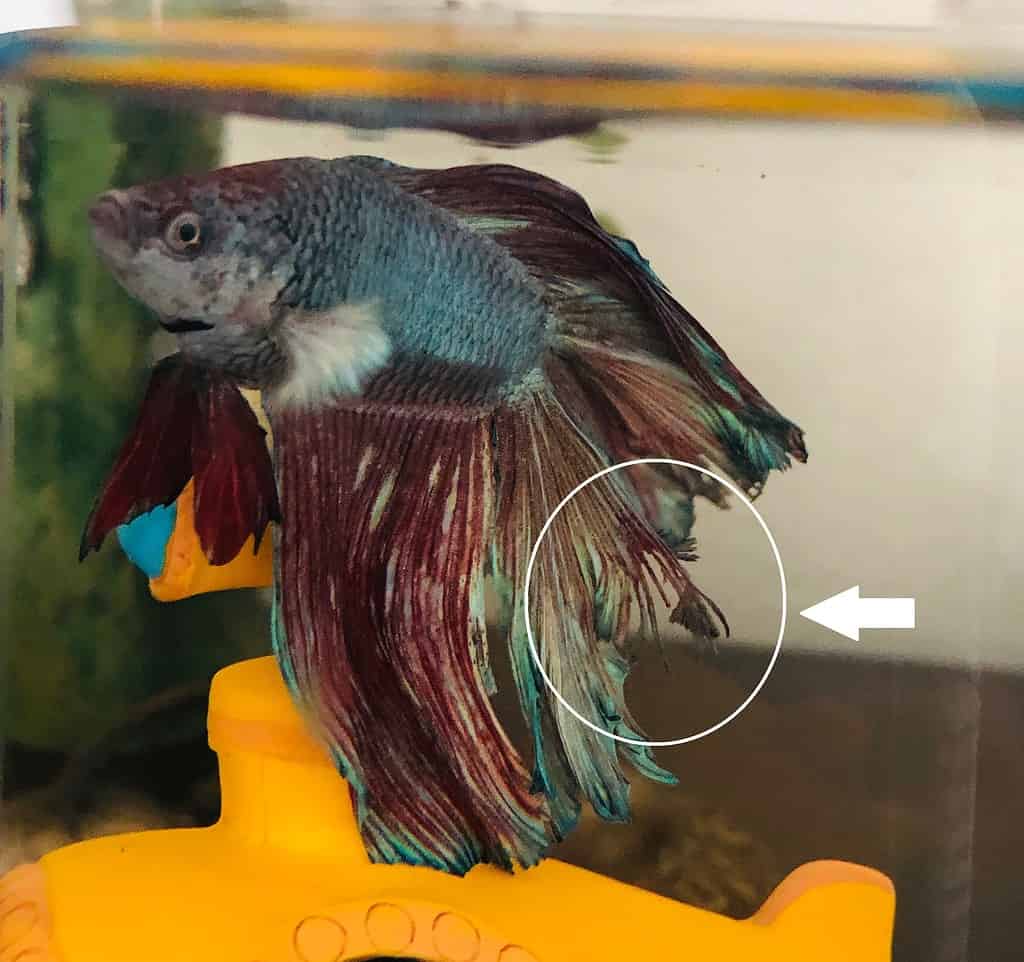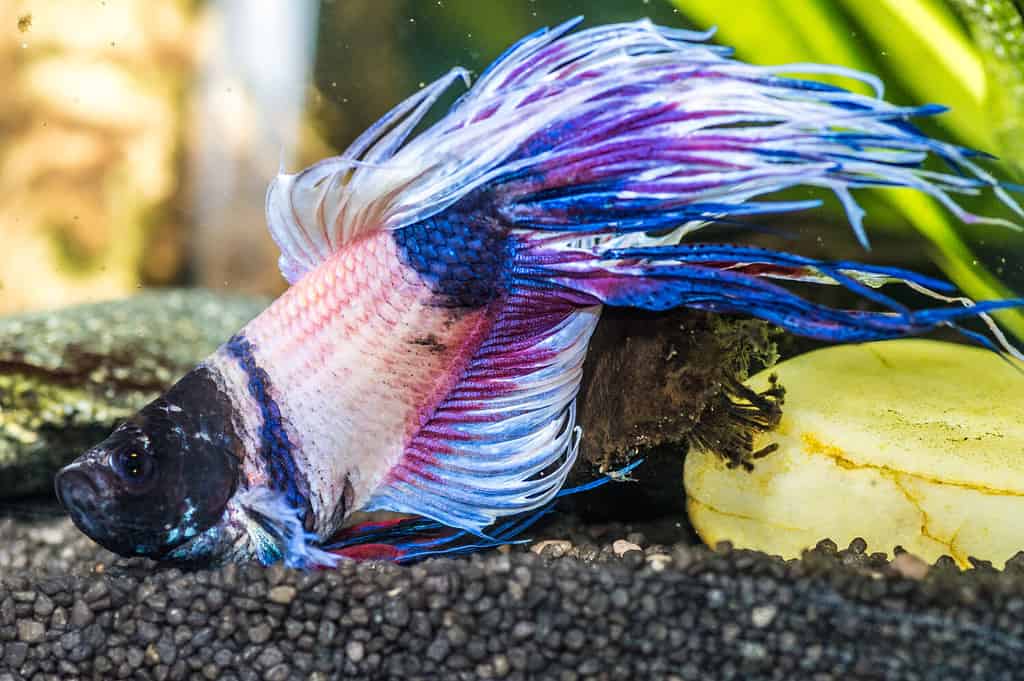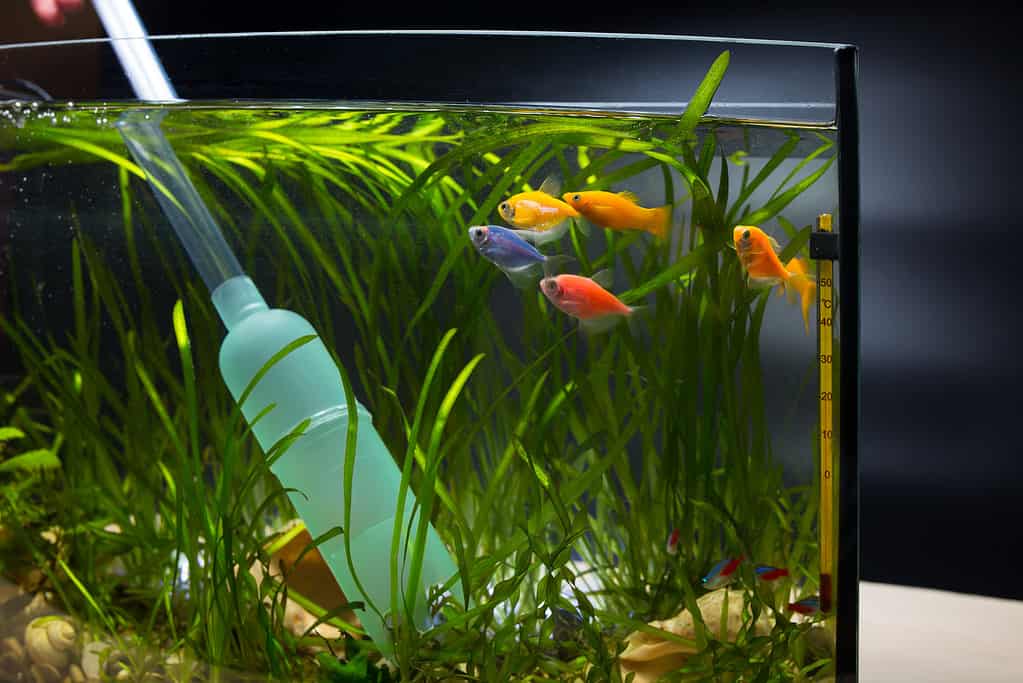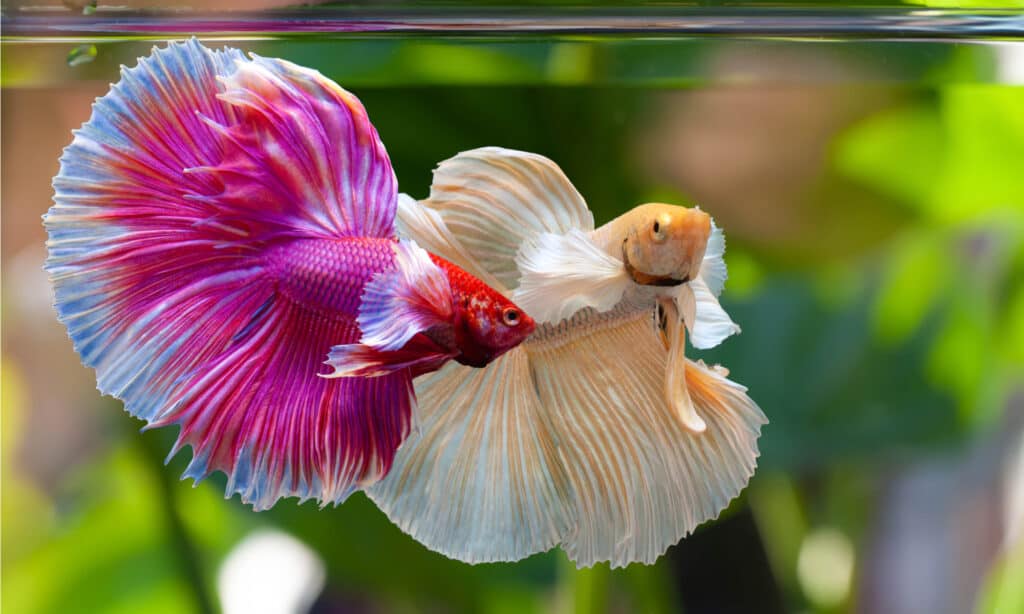Many betta fish owners have experienced the dismay of noticing that their pet’s beautiful, flowing fins are fraying or discolored. Fin rot, also known as fin melt, is a bacterial or fungal infection in which the fins and tail of a fish begin to deteriorate. Fin rot is common among betta fish, and the prognosis is good for a full recovery if you address it properly. Read on to learn how to identify and treat betta fish fin rot.
Identifying Fin Rot

Frayed fins that are discolored at the ends are often a sign of fin rot in betta fish.
©Dizzy Respect, CC BY-SA 4.0 – License
If your betta fish appears to have discoloration at the edges of its fins, it may be a sign of fin rot. Fin rot discoloration is red or black. The fins of an affected betta may appear tattered and sometimes bloody. Torn fins can sometimes occur for different reasons unrelated to fin rot, so look out for other signs like discoloration if you are not sure. Infected fins sometimes have a white, fuzzy appearance if a fungal rot has taken hold. Fin rot may not cause changes in your fish’s behavior, but this does not mean that it is not infected.
How to Treat Fin Rot in Your Betta Fish

Fin rot looks terrible, but it can be effectively treated if addressed promptly.
©Wirestock Creators/Shutterstock.com
Fin rot can be frightening to witness, but fear not! Prompt treatment can cure the disease and save your fish from further harm. A betta fish’s fins can even regrow after the fin rot has been treated. Here are some steps to take if you have identified fin rot in your betta fish. Remember: time is of the essence!
1. Quarantine the affected fish.
If you have more than one fish, it’s a good idea to separate the diseased fish so that it doesn’t infect its aquarium-mates. Prepare a quarantine tank for your infected fish to stay in temporarily. Make sure to condition and heat the water in the quarantine tank sufficiently for your betta fish to survive comfortably.
2. Clean the aquarium.

Maintaining a clean tank is an important part of keeping your fish safe and healthy.
©Sergiy Akhundov/iStock via Getty Images
If you have other fish that are not infected, remove half of the water from the main aquarium. Perform a full water change if your betta fish is alone or if all of your fish appear to be infected. Thoroughly clean the tank and everything in it (including decor, gravel, and plants) with hot water. Clean the aquarium filter as well before replacing the water that you removed with clean water.
3. Treat your fish with a vet-recommended substance.
Seek the advice of an aquatic veterinarian or an aquarium specialist to find out the best course of treatment for your betta fish. They may suggest a simple cleaning and environment improvement, or they may recommend special medication for your fish, depending on the extent of the fin rot.
Mild cases of fin rot are often treated by adding a small amount of aquarium salt to the tank. For betta fish, one tablespoon of aquarium salt per 5 to 7 gallons of water is a general rule of thumb, but it’s always best to check with a professional before proceeding. Dissolve the aquarium salt in a separate container before adding it to the tank water. You can add it incrementally so that the change to the the fish’s environment is gradual. Remember that salt is not suitable for long-term treatment and you should not expose your betta fish to it for longer than 10 days. Never use table salt in an aquarium.
You may also add a catappa leaf to your betta fish aquarium. Catappa is a tree that grows in the betta fish’s natural, tropical habitat. It can release helpful antibacterial tannins into aquarium water. If your betta fish has a more severe case of fin rot, it may require medication to heal. Your veterinarian may recommend an antibiotic medication.
Preventing Fin Rot

Betta fish thrive in appropriately conditioned water that is just the right temperature.
©panpilai paipa/Shutterstock.com
Preventing fin tears is a good way to help ensure that your betta fish does not get a fin rot infection in the future. Remove sharp surfaces and objects that can tear your fish’s delicate fins from the tank. Check the appearance of your fish’s fins daily. This can help you catch any tears or signs of discoloration quickly, before any rot has a chance to take hold.
To keep your betta fish healthy, change your aquarium filter regularly. Make sure your tank is big enough to hold at least two gallons of water. Make sure the environment in your aquarium matches your betta fish’s needs. You can do this by measuring the temperature of the water, doing a pH check, and checking your aquarium filter. Water that is too hot or cold can make your fish weak, vulnerable, and sick, as can water that is too acidic. Betta fish prefer a water temperature between 75 and 80 degrees, and a pH level between 6.5 and 8.
Writer’s note: If you are unsure about what temperature and pH are ideal for your fish, it’s always a good idea to consult with a veterinarian or an aquarium specialist for guidance.
The photo featured at the top of this post is © Ungnoikalookjeab/iStock via Getty Images
Thank you for reading! Have some feedback for us? Contact the AZ Animals editorial team.






